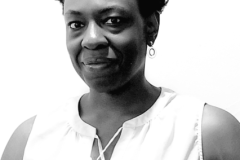Performative activism does more harm than good.
Case in point: In 2020, for maybe all of five minutes, Black lives mattered. Demanding justice for George Floyd was all the rage as self-proclaimed allies poured into the streets chanting “Black Lives Mat-ter!” sporting their new "I-can't-breathe" face masks and hand-painted protest signs demanding that we #SayHerName.
Across the ceramics field, we witnessed an unprecedented outcry for organizations to reckon with their complicity, which resulted in countless cringe-worthy statements of solidarity flooding our social media feeds week after week. Almost overnight, arts administrators, educators, collectors, and curators were all at once vying for the attention of Black ceramic artists and, from an outsider's point of view, it may have appeared that change was on the horizon. However, those of us on the receiving end of this frantic energy knew differently. Cultivating authentic change is a marathon, not a sprint.
Having emerged from this period with somewhat of a reputation for calling organizations out on Instagram, I playfully refer to this progression of events as my villain origin story. Initially, I had simply rolled my eyes and shrugged it off, but it soon became unbearable to watch ceramic organizations with a longstanding history of excluding Black artists suddenly profess their unflinching solidarity with Black lives (and get applauded for it too!). If their actions in real life did not match what they were preaching on social media, I (and many others) decided to call them out, not so much as a shame tactic but more of a visceral defense to what felt like being racially gaslighted in public.
To me, such organizations, which had made zero changes to their internal policies, seemed to be counting on the pendulum swinging back and returning to business as usual. Although this notion was infuriating, not only did it prove to be accurate, it was also quite inevitable. Like the changing of the tides, the 2020 tsunami of opportunities for Black ceramic artists reached its point of inflection, quietly reversed course, and vanished just as quickly as it had appeared.
Such is the game that performative activists play. These (bad) actors make big and flashy gestures, which are temporal in nature and thus ultimately ineffective in producing structural changes. Performative activism is done out of a desire to make oneself look better, rather than a desire to help the cause being promoted. While it is perfectly acceptable to utilize social media to amplify important causes, the problem arises when these efforts do not transcend into the real world. For instance, what meaning does posting a black square on Instagram have if we refuse to challenge our friends/family in real life, engage in constructive conversations about race, and/or confront our own implicit biases?


